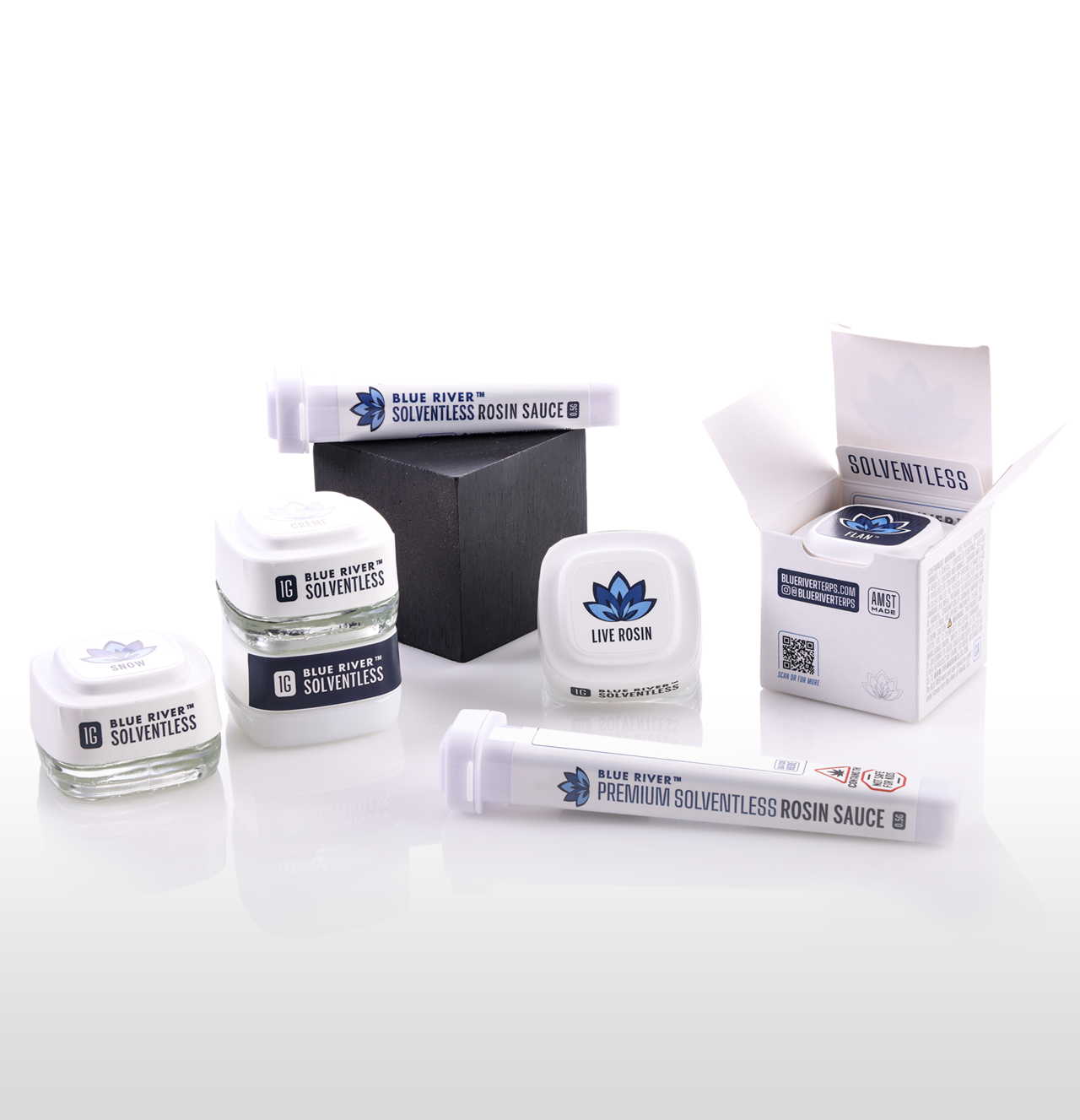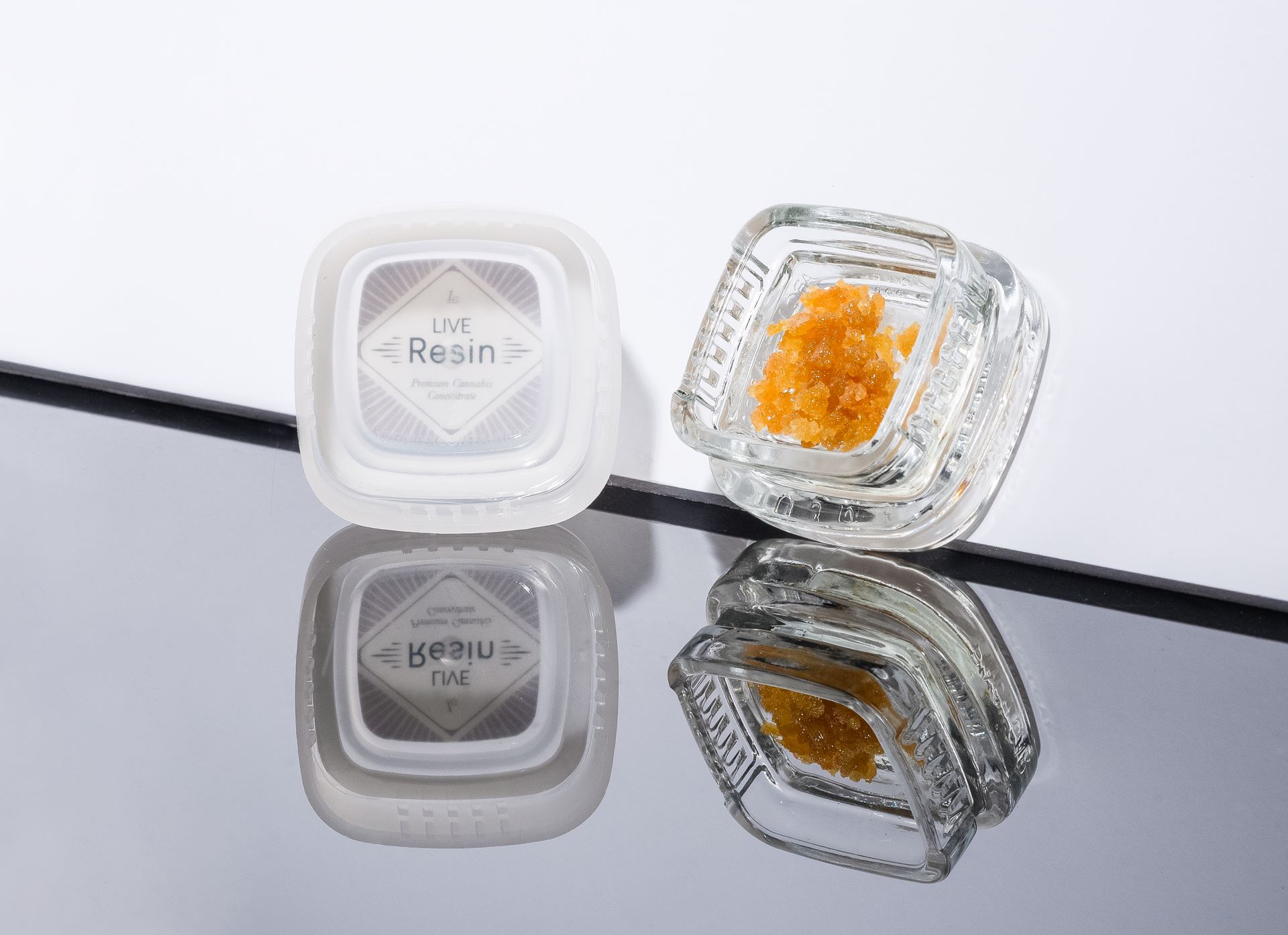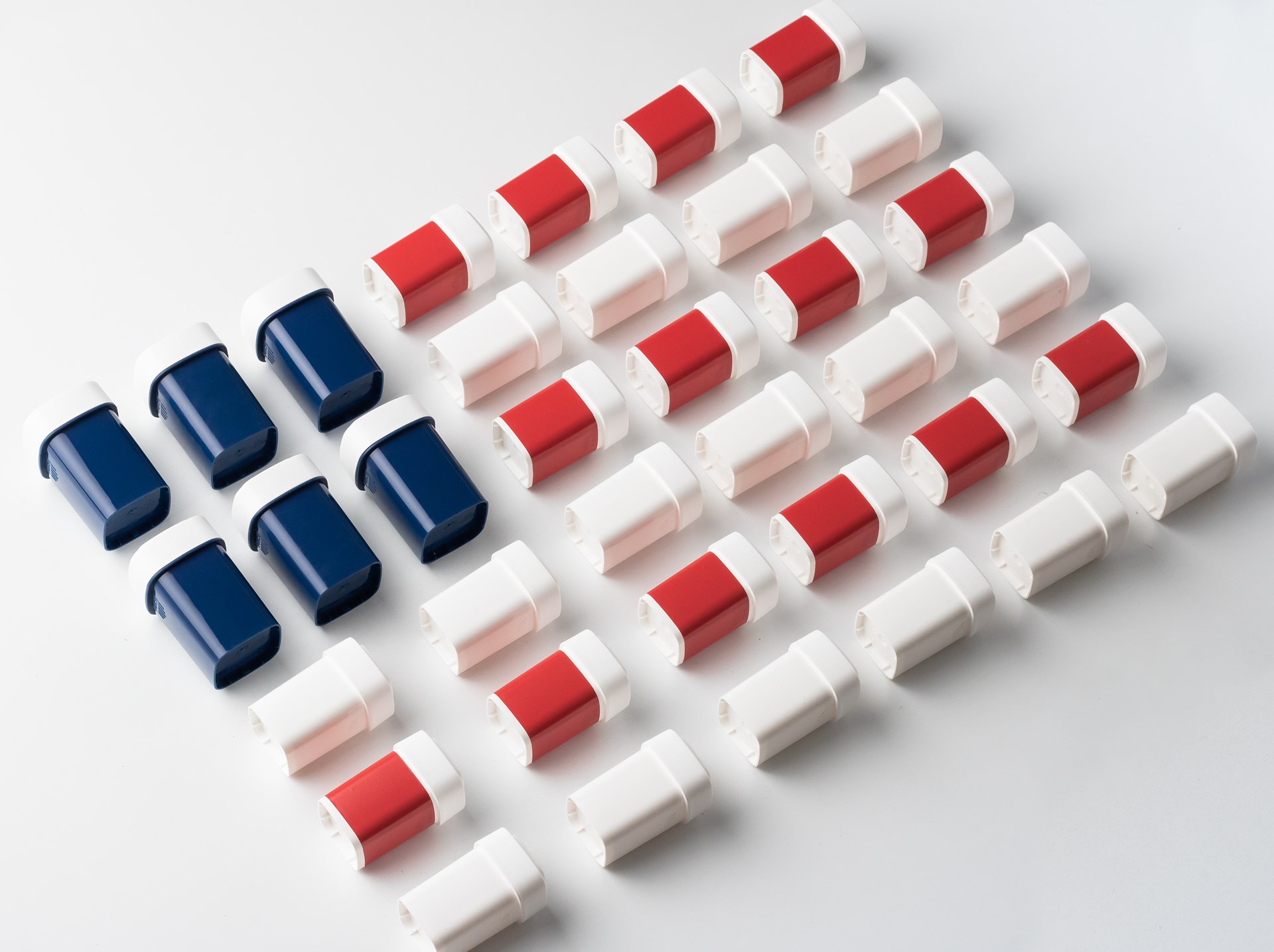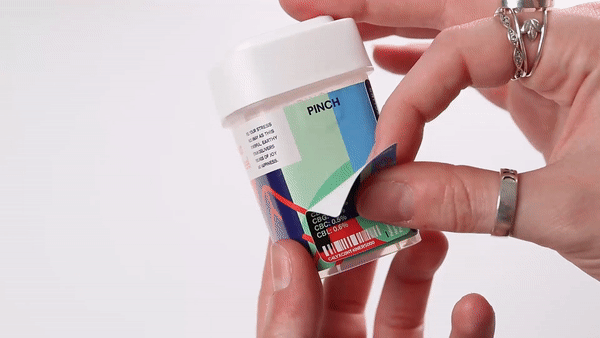
Stay in touch!
Join our email list to receive Calyx content & product updates.
By Calyx Containers in Cannabis Packaging
Cannabis labels are essential—they showcase brands and highlight key information for consumers, and they’re mandated by all states and territories where products are legal. Understanding the importance of labels and how you can make yours stand out can help you rise above your competitors.
The Importance of Cannabis Labels for Producers + Consumers
Labels are equally as important for the cannabis consumer as they are for the cannabis producer. For the producer, the labels are used to showcase the brand story through colors, iconography, embellishment, and copy. The label is also required to achieve compliance with state laws via regulatory text and warnings.
Consumers rely on labels to know what they’re purchasing. Reading the label gives them potency and dosage information, manufacturing/growing information, and could clue them into potential allergens. Customers also develop brand loyalty based on their consumption experience–label quality and design included.
Basic Components of a Cannabis Label
When looking at a cannabis label it might be hard deciphering all of the required information that needs to be on there. Here we’ll break down the basic elements:
Brand Name and Logo
Pretty straightforward! This will be the cannabis’ manufacturers brand, not the dispensary’s brand (unless they’re one-in-the-same), and logo. It’ll usually be stylized to match the brand’s aesthetic.
Strain Name or Product Brand Name
This is the name the manufacturer gave to the genetics of the cannabis that is in the container. Strain information allows consumers to purchase a product that is most likely to give the desired effect, whether for medical or recreational use.
Net Weight or Volume
Living on the main panel of the label, this is a measurement of the total weight of the product only. Net contents should be expressed in terms of weight, numerical count, or a combination of the two.
Expiration Date
This informs the user when the cannabis will no longer be at its optimal freshness for consumption. We must keep in mind that the cannabis degradation process is constantly ongoing… and most expiration dates are established using an arbitrary time frame relative to the original testing date. While this approach is imperfect, it may still provide insight into the general quality of product the user receives.
Batch or Lot Number
This identification number is used for testing and tracking purposes. If you’re purchasing cannabis products in Massachusetts, search them in the Cannabis Product Catalog to learn more about them.
Lab Testing Label
This label contains an overview of all collected data on cannabinoids, terpenes, and contamination from an independent Cannabis Testing Lab. This is one of the best tools for understanding exactly how a product will affect a user.

Why Are Testing Labels Important?
Third-party testing provides consumers with specific data about potency, profile, and flavor while helping producers ensure they are meeting the regulatory requirements of their state
Third-party lab testing is also critical for identifying the presence of harmful contaminants. Analytical testing screens for impurities such as pesticides, residual solvents, heavy metals, and microbial contaminants. These are harmful to human health, so it is important to ensure that cannabis products do not contain any traces of them. This is one of the main reasons consumers should prefer purchasing legal cannabis over products from the traditional market.
Legal Cannabis products are required to display a lab testing label on the packaging. Cannabis is a natural, organic product, with a high degree of natural variation due to differences in genetics, growing conditions, and storage conditions. Third-party lab testing ensures that consumers have access to the most accurate product information, and is an important determining factor in the consumption experience a user will have.
Understanding Total Active Cannabinoids (TAC)
The TAC on cannabis labels displays the total active cannabinoids—information garnered by testing—in the product. It outlines the strain’s cannabinoid profile and can be used to shed light on the product’s potential potency.
TAC does not solely represent how much THC is in the product or how high a consumer will become. Rather it sums up the total concentration of cannabinoids in the product in addition to THC and CBD. It’s important not to conflate a high TAC with potency or quality—a high TAC simply means there are many active cannabinoids in the product.
While TAC is often a prominent feature on a typical Lab Testing Label, there are often unique concentrations of specific cannabinoids listed as well. Each of these compounds are individually analyzed through analytical methods (GC/MS, LC/MS, and HPLC are most common) so that consumers can identify products that have high concentration of their preferred compound or profile. While recreational users may be satisfied with a high concentration of THC, more particular or medical users may seek out products with elevated amounts of CBD, CBG, or CBC (a breakdown of some common cannabis compounds can be found below). No matter which cannabinoids are detected or listed on the Lab Testing Label, all active cannabinoids found in a product are summed up to give a single TAC value.
Key Cannabinoids
As mentioned, there are a lot of cannabinoids that can be uncovered in the testing process of cannabis that need to be outlined on labels. Here are a few major ones and their potential health benefits:
- CBC (Cannabichromene): Known to have pain-relieving effects
- CBCV (Cannabichromevarin): Thought to have similar effects to CBD
- CBD (Cannabidiol): Known to relieve pain, may possibly reduce anxiety and depression, may improve cancer symptoms, among several other positive effects
- CBDV (Cannabidivarin): Similar in effectiveness to CBD
- CBG (Cannabigerol): May improve eye health and inflammation
- CBGV (Cannabigerivarin): May provide anti-inflammatory and pain-combating properties
- THC (Tetrahydrocannabinol): The only known psychoactive cannabinoid and has been proven to improve pain, insomnia, and anxiety
- THCV (Tetrahydrocannabivarin): Known to relieve stress and anxiety
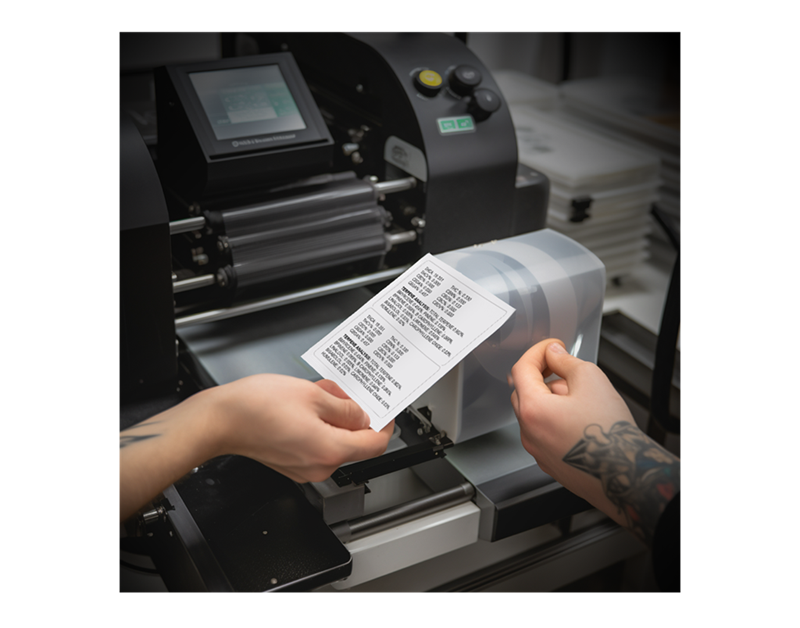
Terpenes + Flavonoids
Are cannabinoids the only cannabis compound that users care about? Enter, terpenes and flavonoids. Terpenes are the aromatic oils in cannabis flower that contribute to its scent and flavor. These unique aromatic compounds directly contribute to not only the cannabis scent but also the unique effects different strains deliver upon consumption (also known as the “entourage effect”). They are largely credited for giving strains their robust personality, character, and unique sensorial experiences in addition to offering relief for specific ailments or medical issues.
Flavonoids, on the other hand, are secondary metabolites known for their chemical diversity and yellow color. These compounds interact with chemical receptors through the human endocannabinoid system and, just like those other two compounds, flavonoids can act as anti-inflammatories, antioxidants, and antibacterials while potentially helping to manage medical symptoms.
Other Ingredients + Additives in Cannabis Products
Not only can cannabis labels inform the consumer about the makeup of the actual cannabis, but they also outline other ingredients and additives that might be present in the product. Some extracts might list solvents as an ingredient if it’s used in the extraction process.
Edibles will have a more exhaustive list of ingredients because of the flavorings, food elements, and potential preservatives. It’s important for consumers to check the ingredient list on cannabis labels to see if there are any potential allergens before consuming.
Cannabis Dosage + Serving Size
Another key element of a cannabis label is the product’s dosage and/or serving size. Every product will have one or the other, helping consumers dole out the proper amounts when consuming so as to not overdo it. However, if the product, brand, or strain is new to the consumer, it’s always recommended to go slow and start with a low dose.
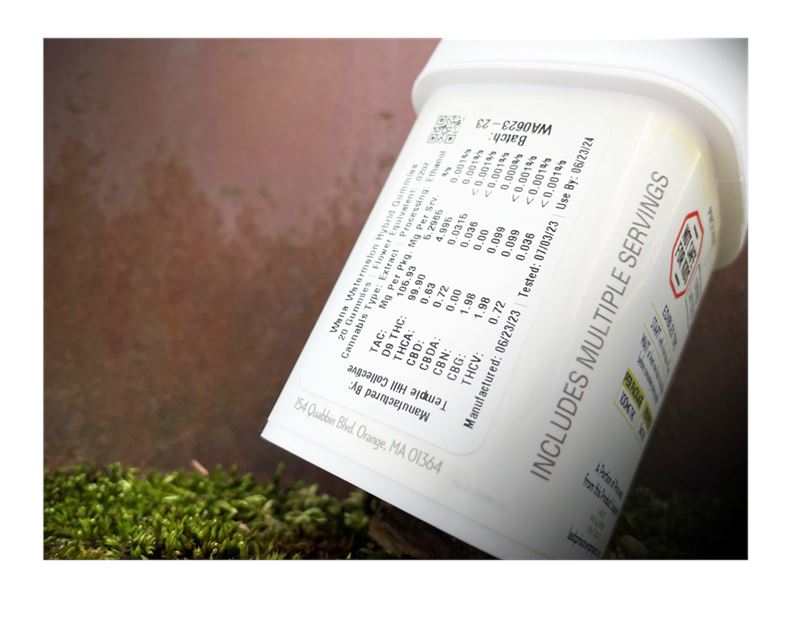
Label Your Cannabis with Calyx
Labels are a must on all cannabis containers. So why not have yours be highly branded, compliant, and stand out among the rest? With Calyx Containers’ labels and sustainable packaging, you can stun on the shelves by leveraging our expertise and digital-first methodology. Check it out for yourself and request a sample kit.
